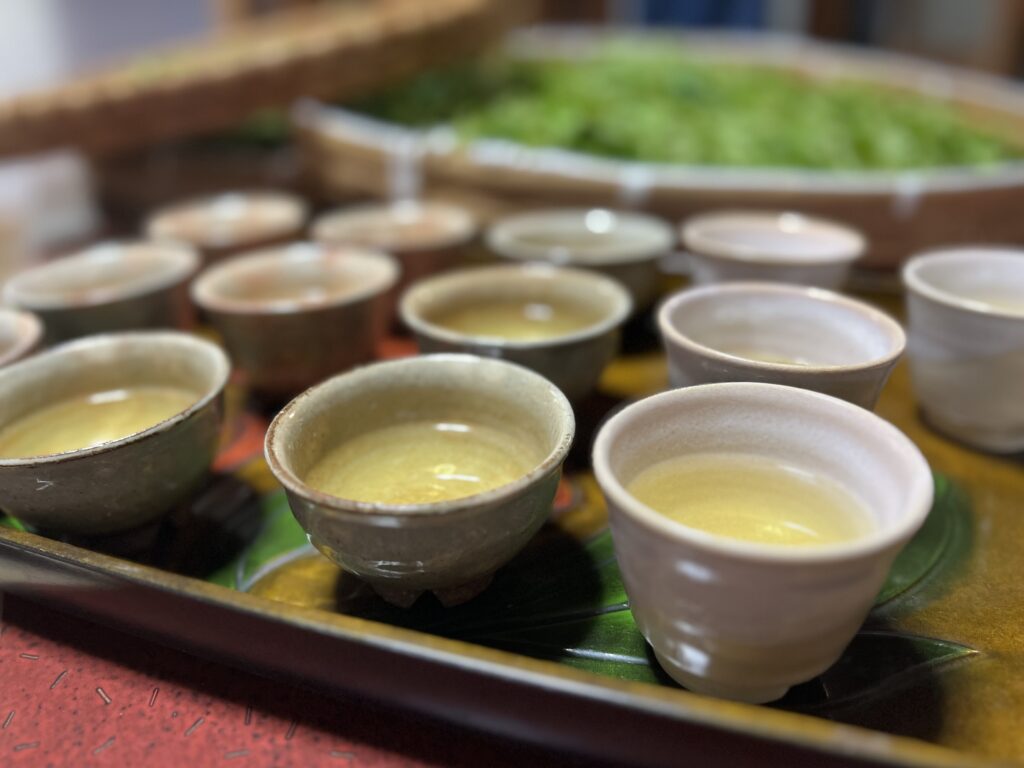Japan’s green tea powerhouses
Shizuoka, Kagoshima, and Kyoto Prefectures are among Japan’s top tea-producing regions. Here, perfectly manicured fields with rows and rows of tea bushes stretch out as far as the eye can see. In winter, towering fans blow warm air across the fields to prevent frost from forming on the leaves, helping ensure a healthy, delicious crop. Much of the tea harvested in these regions is used by major beverage companies like Kirin, Suntory, and Asahi.
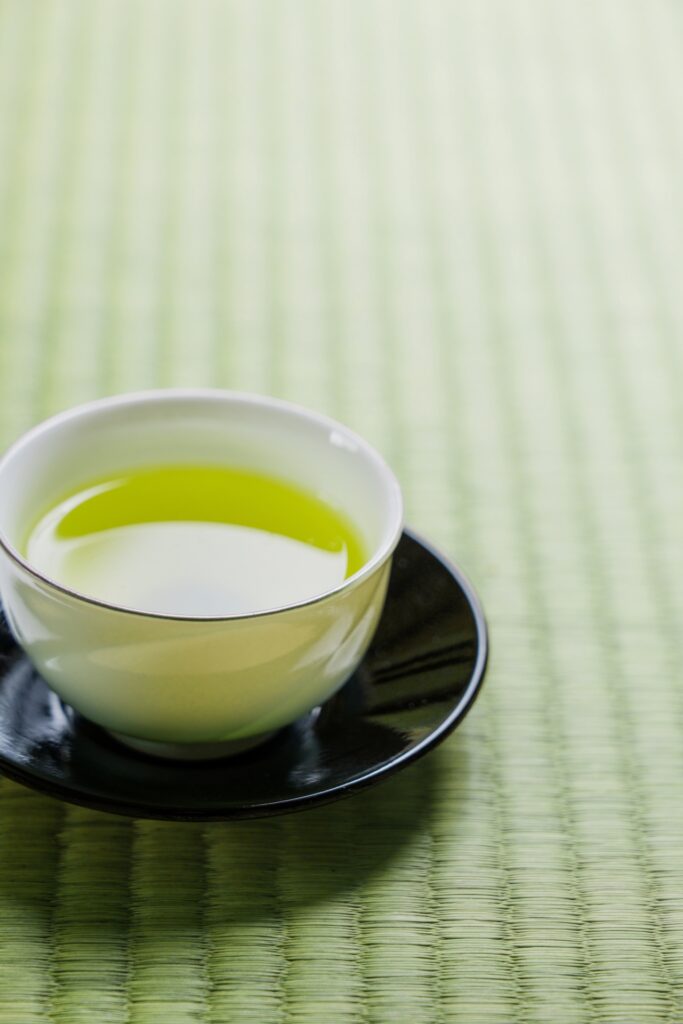

Kakinoki: A village steeped in time and tradition
In Japan, there is no shortage of places to buy green tea—from conbini and supermarkets to vending machines. Today, many people favor the convenience of bottled tea, often at the cost of flavor and quality. But nestled in the mountains where Shimane, Yamaguchi, and Hiroshima Prefectures meet lies a small village by the name of Kakinoki, where a centuries-old tea culture remains untouched.
Time moves slowly in this rural community, where tea is still an integral part of daily life. Many residents grow their own tea for their families and enjoy leisurely tea time between farming tasks. The type of tea made here is called kamairicha. Unlike most green teas today, which are steamed, kamairicha is pan-fired in a traditional Japanese iron pot known as a hagama. This method was thought to have faded long ago, but in Kakinoki, the old ways still thrive.
Only about 4% of tea farmers in Japan use chemical-free, pesticide-free cultivation methods, yet this unassuming village is a leader in organic farming. Without modern conveniences, growing tea here is no easy task. Still, the residents willingly put in the extra effort to ensure quality. They create their own fertilizer using a mix of bamboo, fallen leaves, grasses, and buckwheat husks gathered from the area. These natural methods yield a distinctive flavor: organic tea is often said to have a stronger aftertaste and a lingering sweetness compared to mass-produced varieties.
It’s how tea traditionally tasted—in a way, its truest form—long before modern farming practices were introduced.
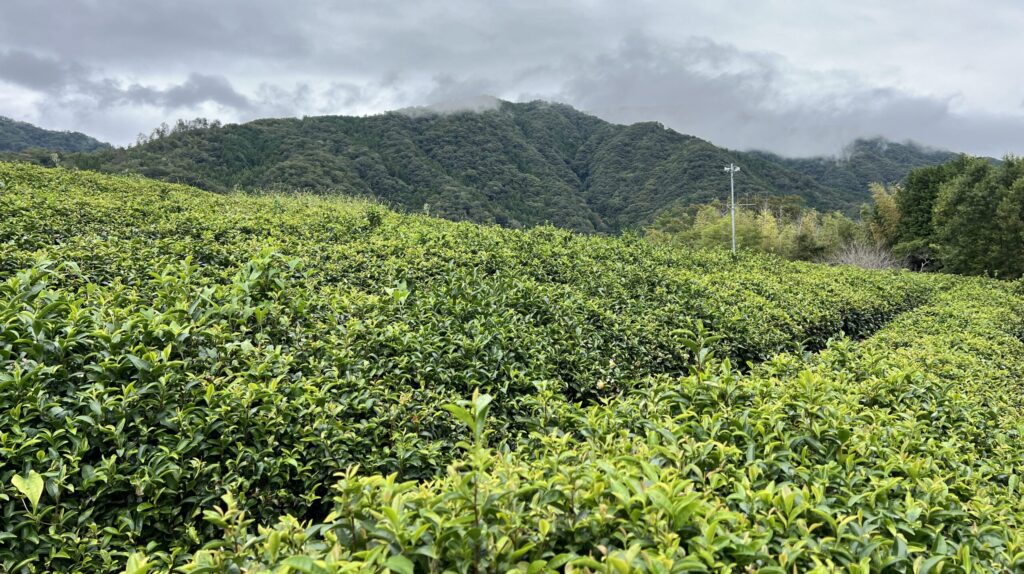
How a tea master found her calling in Kakinoki
Minako Uehara is a driving force behind the preservation of organic tea cultivation in Kakinoki and the sharing of its wonders with visitors. But her journey into the world of tea didn’t begin among these misty Shimane mountains. It started hundreds of kilometers away in Kanagawa Prefecture.
After falling in love with the art of tea ceremony in her 30s and completing rigorous training, Minako became a certified master instructor in senchado—a style centered on steeping loose green tea leaves, unlike the more widely known chanoyu, which involves whisking powdered matcha with hot water. Her deep desire to learn more about tea eventually led her to apply to a special training program for aspiring tea farmers in 2010. But it wasn’t until six years later that she heard about a quiet village named Kakinoki, where tea fields were in desperate need of revival.
Cradled along the Takatsu River, consistently ranked among the clearest in Japan, Kakinoki immediately captivated her. Though the fields were overgrown and the factory machines were aging, everything had been lovingly cared for. She could sense the warmth and pride of the people who had tended them and understood how deeply the local tea heritage was cherished.
When she learned that Kakinoki was home to kamairicha—a rare and unusual tea-making method even by national standards—her decision was made. She joined a regional revitalization program, relocated completely, and committed herself to rekindling the legacy of the local tea culture.
Since then, Minako has helped launch a local tea brand called Kaguracha, named after Kagura, the sacred performance art that remains a beloved part of daily life in Kakinoki. She continues to empower local tea farmers and grow a wider community of tea lovers by offering hands-on experiences such as kamairicha workshops and tea-leaf picking.
Today, she manages a section of the Shiratani Seichado tea fields, which she calls Yumemiru Chabatake—the “Tea Field of Dreams.” It was here that I had the pleasure of visiting in the autumn of 2024.
Among the tea flowers and mountain mist
As we drove deeper and deeper into the mountains on our way to the tea fields, I found myself wondering where exactly we were headed. We stopped in front of a narrow path that wound up the mountainside and into the forest. After a short walk, Minako’s modest tea farm came into view, tucked in a small valley between the surrounding hills.
The field was far less orderly and manicured than any I had seen before, but scattered among the green leaves were delicate flowers in bloom. Minako explained that tea flowers are a sign of a thriving, healthy field.
The overcast sky threatened rain, but it held off just long enough for us to pick a few leaves before making our way back down the hill to Minako’s production house.
To share the history of tea and organic farming with visitors, Minako also manages the Iwami Tea House, which includes Yumemiru Chabatake, a processing facility, and a quaint tea room. She runs her business out of a beautifully preserved kominka (folk house) built in 1935.
In its kitchen, we donned work gloves and took turns kneading and rolling the freshly picked leaves. This step is essential: the leaves must be kneaded constantly to prevent charring and ensure they roast evenly.
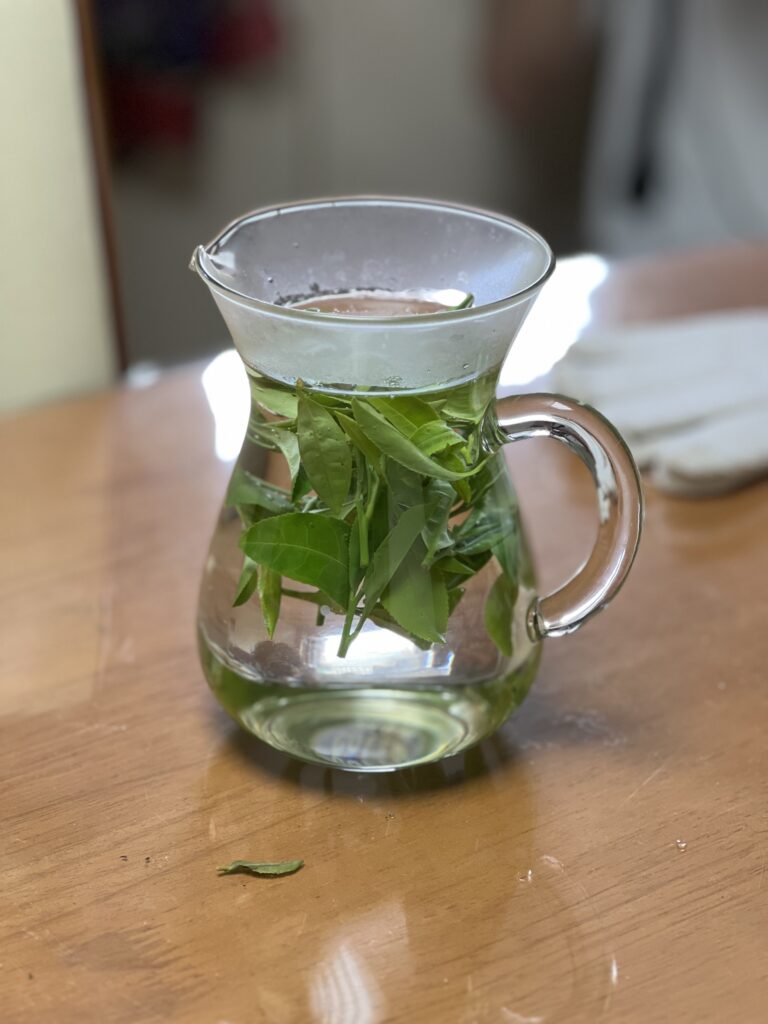
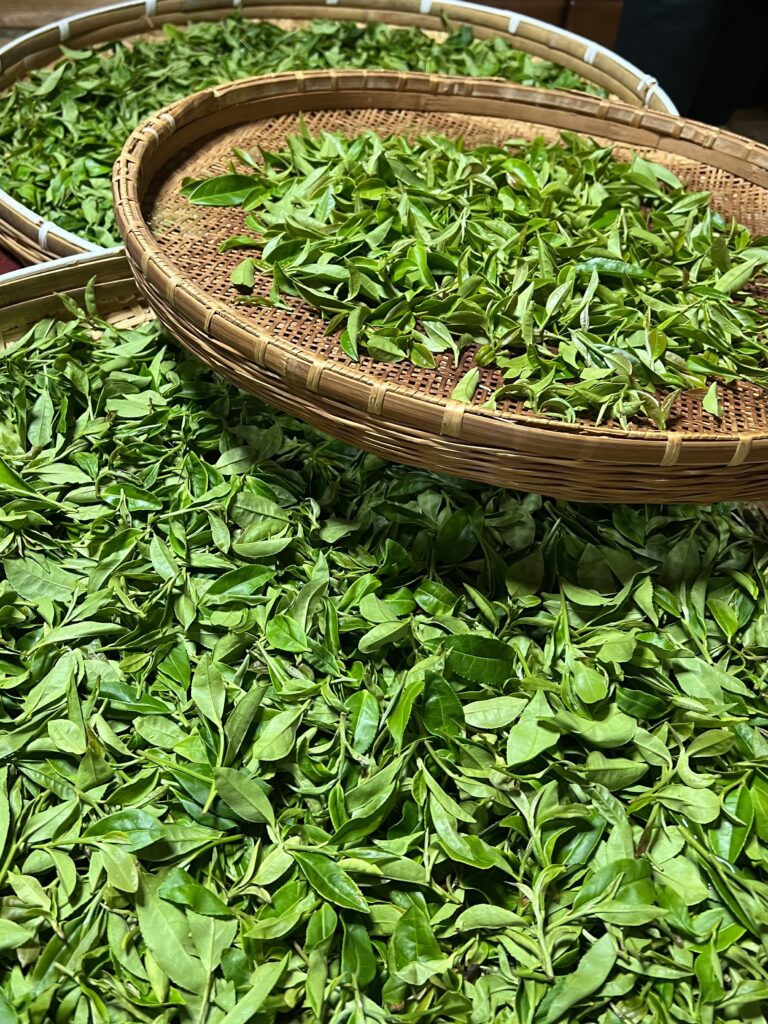
Passing down the wisdom
It’s clear that Minako takes tea cultivation seriously and is deeply passionate about producing a high-quality, safe, and delicious product. When she is not working in the fields, she teaches visitors about the organic farming methods used in Kakinoki and is compiling her extensive knowledge of traditional tea cultivation into an in-depth guide. Her research focuses on the San’in and San’yo regions, which include Shimane, Tottori, Yamaguchi, Hiroshima, and Okayama Prefectures.
Yumemiru Chabatake’s website describes the heart of Minako’s mission: “The knowledge and techniques to produce delicious tea more easily are wonderful, but here we are devoted to taking the time to discover tea’s purest flavors and to both understand and savor ocha no chikara, the true ‘power of tea.’”
At the end of the tour, each of us was sent home with a small package of the tea we had made together. That night, I sat in my kitchen, sipping a warm cup and reflecting on all I had learned. I felt grateful to the diligent, hardworking people of Kakinoki who continue to take the time and care to produce organic tea the traditional way.
Thanks to Minako’s dedication, I have no doubt this legacy will be passed down for generations to come.
